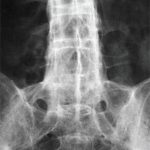Recent studies in CD have supported the role of defective host immune response to foreign organisms in immunopathogenesis. Genetic susceptibility to CD has been related to polymorphisms in the CARD15 gene, but the implicated SNPs suggest a loss-of-function process that would predict diminished, not enhanced, elaboration of TNF-α. This situation seems counterintuitive in a disease that is marked by TNF-mediated inflammation and that is responsive to anti-TNF agents. Recent studies have shed light on this paradox.20 Macrophage function in CD is indeed diminished, with impaired generation of proinflammatory cytokines, as a function of lysosomal degradation of precursor molecules, which impairs their egress to the secretory pathways of the macrophage. The net effect of this cytokine signature is a diminished inflammatory response to pathogens, with persistence of the organism being the consequence. Thus, the model for CD, as that for ReA, is undergoing a conceptual change, suggesting that therapeutic enhancement rather than diminution of host immune responses as a strategy for intervention.
Have we thus come full circle? Metchnikoff had postulated that the macrophage is the critical gatekeeper in host–pathogen interactions. With the expanded knowledge of innate immunity in arthritis and autoimmunity, and the recognition that TLR function as gatekeepers of adaptive immunity by upregulation of costimulatory molecules, the microbial aspects of ReA and CD have begun to be clarified. The genetic complexity of CD revealed in recent genome-wide association studies suggests that modulation of host–microbial interactions is a complex and changing story. But more pieces of this challenging jigsaw puzzle are now in place.
The Strange Case of Chlamydia-induced ReA
The recognition that Chlamydia trachomatis and Chlamydia pneumoniae species may exist in a persistent metabolically active infection state in the synovium suggests that persistent Chlamydiae may be susceptible to antimicrobial agents. One recent study was a nine-month, double-blind prospective trial assessing a six-month course of combination antibiotics as a treatment for Chlamydia-induced ReA.21 Treatment arms consisted of doxycycline and rifampin, azithromycin and rifampin, or placebo. After six months of treatment, 17 out of 27 subjects (63%) on antibiotics were responders compared with three of 15 (20%) on placebo. Antibiotic treatment was associated with significant improvement in the modified swollen joint count and tender joint count. There were significantly more subjects who became polymerase chain reaction negative at month six in the active therapy group than in the placebo group. These data suggest that a six-month course of combination antibiotics may be an effective therapy for chronic Chlamydia-induced ReA.


